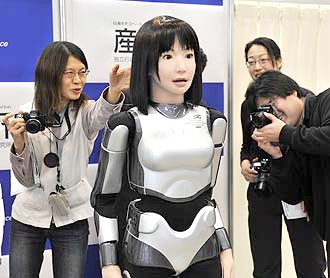Ranked #6 in Bloomberg’s 50 most innovative countries (although I do slightly doubt this index with South Korea coming in at second place), Japan has indeed won many hearts with their quirkiest technologies. And perhaps just as intricate as the craft of creating a mouth-watering platter of sushi, are the kinds of technology that have gone beyond the kasumi and honyaki.
In the video above, we have seen how one particular Japanese restaurant has replaced waiters with hyper-efficient sushi conveyor belts and smart food containers, which can accurately determine how long the sushi had been stored. Upon reaching the maximum duration threshold that had been pre-set by the chefs, these plates of sushi are then disposed of. Freshness guaranteed! Additionally, in order to keep customers going on the sushi plate count and to reduce the need for service staff, every empty plate can be disposed of right at the customer’s table, incentivized by the chance to win prizes for every 5 plates disposed.
Yet, service staff are not the only ones being replaced in Japan. Several restaurants have also entrusted the delicate preparation of food into the hands of robots. Take a look at the video below:
1. Japan ramen robot
Going beyond Japanese restaurants, domestic helpers are soon to be replaced by robots as well. Designed and invented by a Japanese top university, this robot is said to tackle the issue of Japan’s aging population. A sparkling clean home without having to ever touch the mop or broom again – and probably just in time for this non-resistant techie generation to reach its ripe old age, as it requires another decade or two before these robots can be mass produced.
2. Japan robot maids
And perhaps because getting household chores done and preparing food in restaurants are way too simple, even more abstract robots are already surfacing in Japan. The next robot is invented by astronomers at Cerro Tololo Inter-American Observatory in Chile, in hopes of unlocking the secrets of our changing universe with the most powerful sky-mapping camera ever built (currently the world’s largest optical imager with 570 million pixels). Aiming to discover some 300 million galaxies and 4,000 supernovae and priced at 1.3 million dollars each, these robots are able to survey about six times the area of a full moon in a single exposure. Wait, what are Chilean robots doing in Japan?
3. Debut of Ironman in Japan
At first glance, the next robots could be mistaken as real human beings. Developed by a research group in Japan known as AIST, these robots are currently being placed as observants in hospitals to see how patients feel in their presence. Cameras in the retina of these robots can then accurately capture patients’ progress as the robot heads are designed to be responsive enough to direct their line of sight to where movement is. Beyond the scope of hospitals, these robots are said to have a greater positive impact as they can possibly be employed to improve interactivity and communication amongst young children or elderly people who are physically impaired in these areas.
4. Japan’s humanlike robots
Yes, to err is human. Yet, we humans constantly strive for perfection. Will Russian-born writer, Isaac Asimov, finally be right when he says “… you just can’t differentiate between a robot and the very best of humans”?enablejsapi=1&html5=1&
Read also: Airbnb user account “hacked” for one week, payment system issues?














